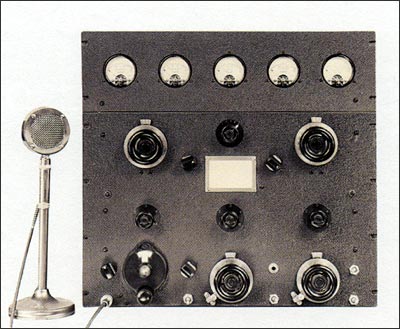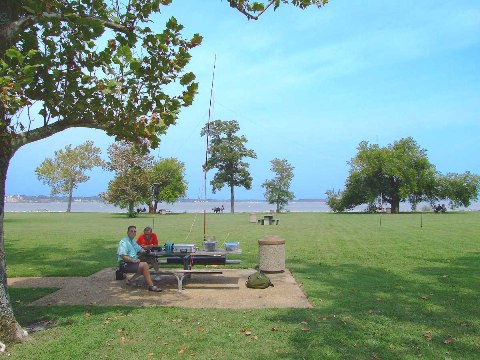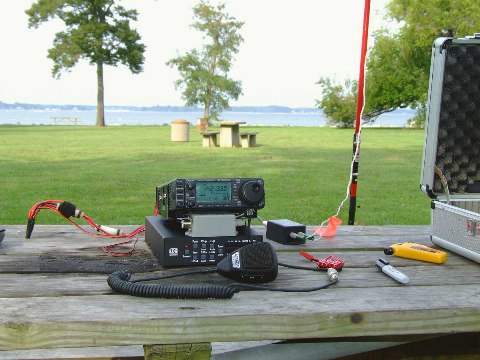 The Thursday before Labor Day Weekend I was able to get off work an hour early and headed up to Fort Eustis through a light drizzle (the early beginnings of Tropical Storm Ernesto) to pick up the RV. The beast was 29′ long and about 11′ high. A young gentlemen gave me a orientation of the vehicle which lasted about 45 minutes. First an initial walk around, then an explanation of how to flush the black and gray water holding tanks, how to connect city water, how to connect electricity, how to operate the generator, and how to operate the propane supply. All of this and we hadn’t even made it inside the RV yet. When we did make it inside, I was briefed up on how to operate the test panel, how to turn on the water heater, and a assortment of additional tips for easy operation of all the RV’s features. For instance…. don’t run the A/C while also running the microwave and the water heater takes 20 minutes to provide enough hot water for a shower. There was also a TV with an external antenna that cranks up into position. Nothing super complex, just lots and lots of stuff.
The Thursday before Labor Day Weekend I was able to get off work an hour early and headed up to Fort Eustis through a light drizzle (the early beginnings of Tropical Storm Ernesto) to pick up the RV. The beast was 29′ long and about 11′ high. A young gentlemen gave me a orientation of the vehicle which lasted about 45 minutes. First an initial walk around, then an explanation of how to flush the black and gray water holding tanks, how to connect city water, how to connect electricity, how to operate the generator, and how to operate the propane supply. All of this and we hadn’t even made it inside the RV yet. When we did make it inside, I was briefed up on how to operate the test panel, how to turn on the water heater, and a assortment of additional tips for easy operation of all the RV’s features. For instance…. don’t run the A/C while also running the microwave and the water heater takes 20 minutes to provide enough hot water for a shower. There was also a TV with an external antenna that cranks up into position. Nothing super complex, just lots and lots of stuff.
It was a slow ride on I-64 back to Hampton. Not because of heavy traffic, but because I was trying to get a feel for piloting the beast. The wheel was a little loose and it took a while to slow down. The rain didn’t help much. I arrived home and parked out in the street in front of the house. When untethered to an electrical hook up, the RV uses propane to keep the refrigerator going. To avoid depleting the propane, I ran a heavy duty extension cord out to the RV to give it a steady supply of juice.
We decided to watch the progress of Ernesto and wait to see if we’d leave Friday or postpone until Saturday. As the night progressed the winds picked up and the rain continued on.
Friday morning showed that the rain and wind were still continuing. My weather station indicated the rain had picked up around 2am and was maintaining a consistent heavy downpour. The radar showed the southern edge of Ernesto nearing the North Carolina border to the south. Even though the storm would clear our location by about 2pm reports from the roadways indicated things were a mess for motorists and we decided to move our departure to Saturday morning. It was at this time that I noticed the water out front was rising significantly. I could see the water level approaching the storage compartments underneath the RV. After shuffling the cars in the driveway, I splashed out to the RV parked on the street/canal, started it and did a loop around the block to position it to allow me to pull into the driveway. The short loop showed that a few other streets had flooded and small tree limbs and other debris was accumulating in the road – but nothing severe.
Ernesto passed by about 3pm and the standing water drained quickly. We did a quick clean up of all the fallen leaves and small branches in the yard and then repositioned the RV in the driveway for easy loading. From all reports, we were wise to delay our departure as fallen trees and the rain had closed down section of I-64.
Saturday morning arrived and we finished packing the RV and got on the road. Traffic was light and moved well. I kept the speed at about 55-60mph, still getting a feel for how the RV handled. After one break at a rest stop west of Richmond for lunch, we pressed on towards the Misty Mountain Campground in Crozet, VA. Enjoyed a nice QSO on a repeater in Charlottesville with Harry, W2HD. I later found out (according to QRZ.com) that Harry was a former president of ARRL! He chatted a little about being in the Navy but never mentioned the fact of his involvement with The League.
After checking in to the Misty Mountain Campgrounds HQ we arrived at our camp site. The hookups were pretty straight forward and soon enough we had the RV humming.
On Sunday we took the truck to explore the first fifty miles of the Blue Ridge Parkway. What a beautiful area! I was able to hit one of the repeaters back in Hampton from the first overlook along the Parkway. Pretty good for a 150 mile path using 50 watts on FM.

Sunday night I set up the ARSIB and tried to work both
S9SS (Western Africa) and
P43W (Aruba) but failed to break the pile ups.
Monday morning I had a nice QSO on 40M with Jim, W2SY up in Syracuse, NY. After enlisting in 1940, Jim served in the Army during WWII and participated in the Africa, Italy, and European campaigns. Jim gave me a nice 59 report and am glad I was able to get at least one HF contact before it was time to pack up shop .
The trip home encountered a little bit of rain, but traffic was also light and the trip was uneventful. Average speed on I-64 was probably about 65mph as I was feeling a little more comfortable driving by now.
All in all, I enjoyed the RV DXpedition. Next time I will set up the rig earlier and try to do more operating.




 The Thursday before Labor Day Weekend I was able to get off work an hour early and headed up to Fort Eustis through a light drizzle (the early beginnings of Tropical Storm Ernesto) to pick up the RV. The beast was 29′ long and about 11′ high. A young gentlemen gave me a orientation of the vehicle which lasted about 45 minutes. First an initial walk around, then an explanation of how to flush the black and gray water holding tanks, how to connect city water, how to connect electricity, how to operate the generator, and how to operate the propane supply. All of this and we hadn’t even made it inside the RV yet. When we did make it inside, I was briefed up on how to operate the test panel, how to turn on the water heater, and a assortment of additional tips for easy operation of all the RV’s features. For instance…. don’t run the A/C while also running the microwave and the water heater takes 20 minutes to provide enough hot water for a shower. There was also a TV with an external antenna that cranks up into position. Nothing super complex, just lots and lots of stuff.
The Thursday before Labor Day Weekend I was able to get off work an hour early and headed up to Fort Eustis through a light drizzle (the early beginnings of Tropical Storm Ernesto) to pick up the RV. The beast was 29′ long and about 11′ high. A young gentlemen gave me a orientation of the vehicle which lasted about 45 minutes. First an initial walk around, then an explanation of how to flush the black and gray water holding tanks, how to connect city water, how to connect electricity, how to operate the generator, and how to operate the propane supply. All of this and we hadn’t even made it inside the RV yet. When we did make it inside, I was briefed up on how to operate the test panel, how to turn on the water heater, and a assortment of additional tips for easy operation of all the RV’s features. For instance…. don’t run the A/C while also running the microwave and the water heater takes 20 minutes to provide enough hot water for a shower. There was also a TV with an external antenna that cranks up into position. Nothing super complex, just lots and lots of stuff.
 Went up to the
Went up to the 
